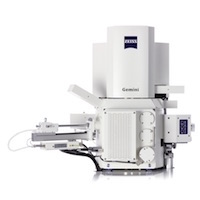Members Login

Channels
Special Offers & Promotions
ZEISS Microscopy Systems Technology to Expand Capabilities of UC Merced
ZEISS industry-leading GeminiSEM 500 imaging system to enhance the MACES open access microscopy imaging facility
 ZEISS announces that it is providing its GeminiSEM 500, customized for nanomaterial characterization, to the University of California Merced’s Merced Nanomaterials Center for Energy and Sensing (MACES). The University’s recent purchase will support the university’s strong nanomaterial-based research programs and aid in the Center’s research in functional nanomaterials for energy and sensing for NASA missions.
ZEISS announces that it is providing its GeminiSEM 500, customized for nanomaterial characterization, to the University of California Merced’s Merced Nanomaterials Center for Energy and Sensing (MACES). The University’s recent purchase will support the university’s strong nanomaterial-based research programs and aid in the Center’s research in functional nanomaterials for energy and sensing for NASA missions.
“My lab’s research involves creating nanomaterial-enabled high performance transducer platforms for green energy and life science. High resolution at Low kV offered by the GeminiSEM 500 system is well suited for our needs as well as other projects conducted by MACES faculty members.” said Prof. Jennifer Lu, Director of the Merced Nanomaterials Center for Energy and Sensing. “Additionally, this technology will allow us to continue our mission of training the next generation of leading researchers, scientists, and engineers and preparing them for the valuable work they will take on in a variety of STEM fields after they leave UC Merced. We are looking forward to working with ZEISS to make the instrument available to our research and education community expeditiously”
ZEISS will provide MACES with the GeminiSEM 500 Field Emission Scanning Electron Microscope (FESEM) with Nano-twin lens and in-lens SE and EsB detectors, along with the in-chamber ET SE detector. The flagship GeminiSEM 500 showcases the latest technology advancements to the company’s unparalleled Gemini Column. The instrument is the first to be shipped to North America.
The Gemini column uses a unique in-column deceleration technology, which is always enabled and employed at a +8kV potential. The accelerated primary beam is decelerated prior to exiting the objective lens, resulting in a lower landing voltage. As the electron signals enter back into the column, they are boosted inversely to the deceleration of the primary beam. In other words, the signal speeds up before striking the on-axis in-column detectors.
Media Partners


